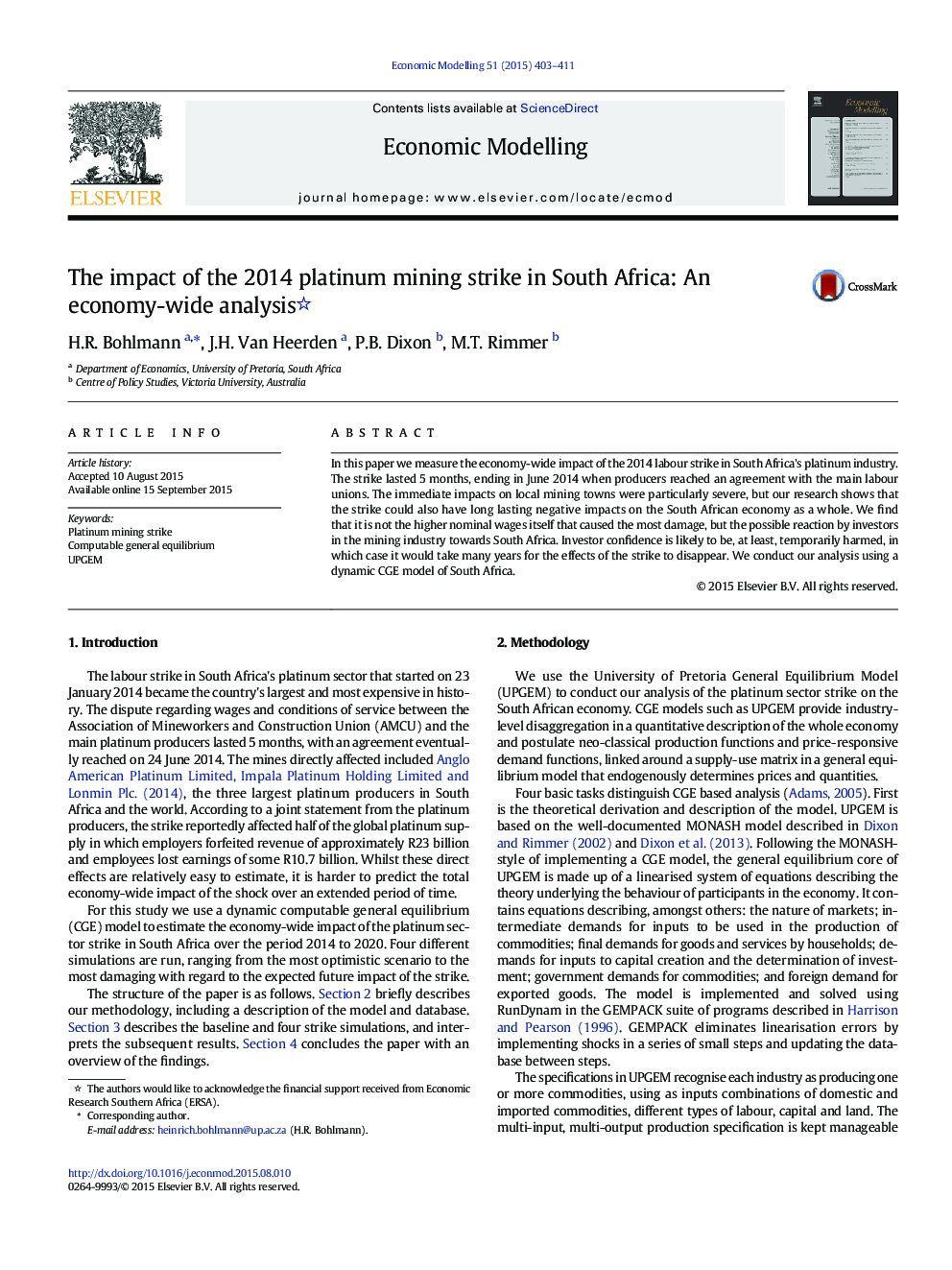| Article ID | Journal | Published Year | Pages | File Type |
|---|---|---|---|---|
| 5053734 | Economic Modelling | 2015 | 9 Pages |
â¢We develop an innovative modelling strategy to capture the economy-wide effects of a labour strike that includes temporarily reducing industry-specific capital.â¢Our findings suggest that real GDP was reduced by around 0.8% as a result of the strike in 2014, explaining around half of the IMF's downward revision.â¢The response by investors drives GDP and mining sector output results in the medium term.
In this paper we measure the economy-wide impact of the 2014 labour strike in South Africa's platinum industry. The strike lasted 5Â months, ending in June 2014 when producers reached an agreement with the main labour unions. The immediate impacts on local mining towns were particularly severe, but our research shows that the strike could also have long lasting negative impacts on the South African economy as a whole. We find that it is not the higher nominal wages itself that caused the most damage, but the possible reaction by investors in the mining industry towards South Africa. Investor confidence is likely to be, at least, temporarily harmed, in which case it would take many years for the effects of the strike to disappear. We conduct our analysis using a dynamic CGE model of South Africa.
